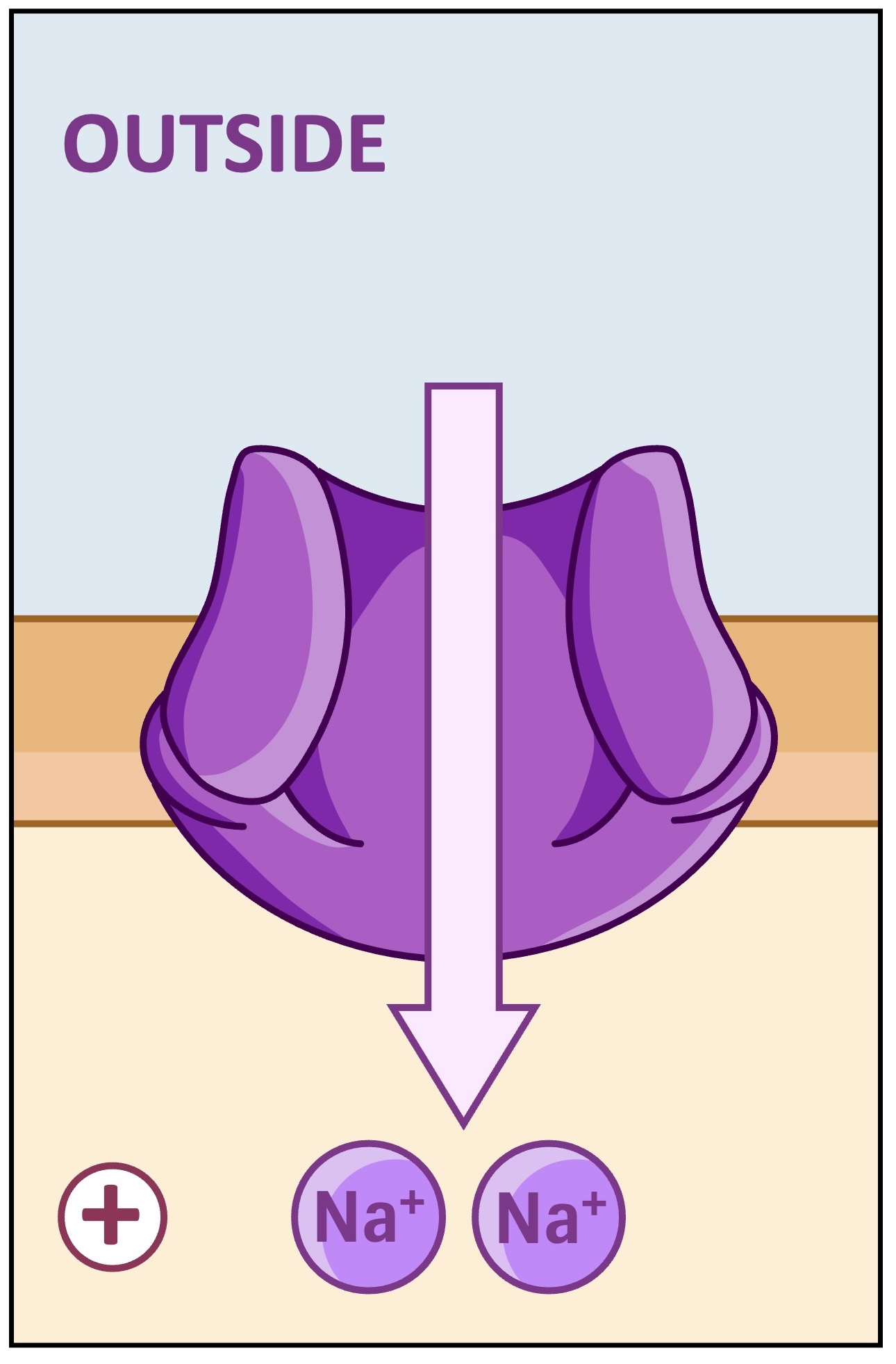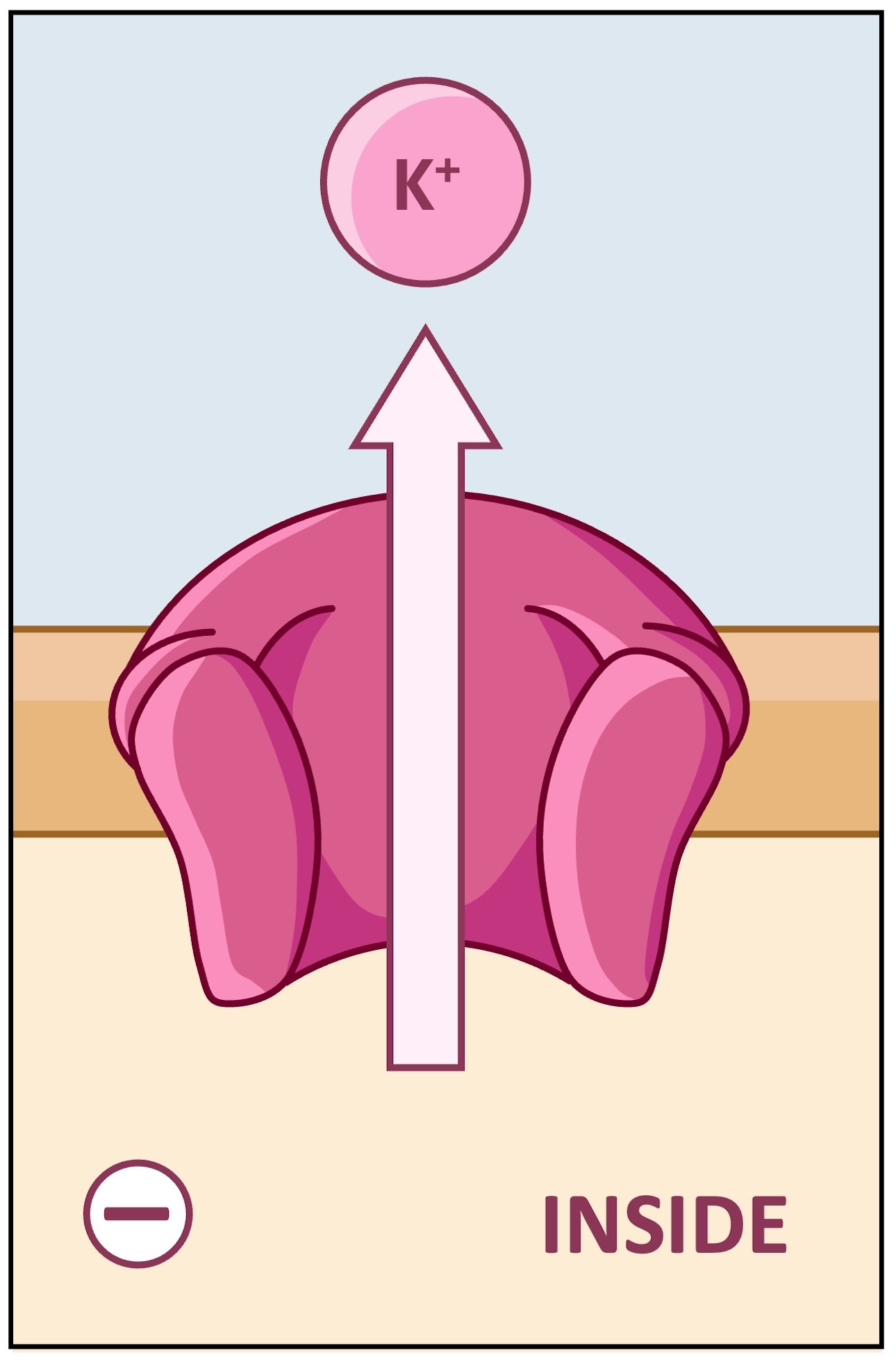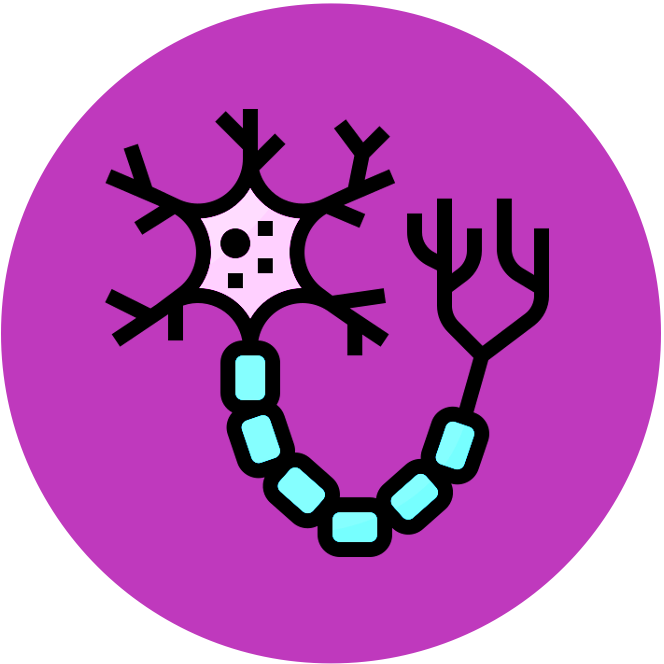

Action Potentials
Action potentials are the rapid changes in charge across the membrane that occur when a neuron is firing
-
During an action potential, the inside of the neuron becomes temporarily more positive relative to the outside (approximately +30 mV)
The change in membrane potential is triggered by the opening of sodium and potassium channels along the axon
-
The positively charged ions will move along the concentration gradient that was established by the resting potential, creating an electrical change
-
The sodium ions first move into the neuron to create a positive membrane potential (depolarisation), before the potassium ions flow out to re-establish a negative membrane potential (repolarisation)
Action Potential Stages

Depolarisation
Sodium Channel

Repolarisation
Potassium Channel
The ion channels are voltage-gated, meaning a change in voltage at one point of an axon will trigger the opening of ion channels in the next segment of the axon
-
This causes the action potential to be propagated along the length of the axon in a unidirectional wave
Once an action potential has occurred, the resting potential must be restored by the sodium-potassium pump before another action potential can happen
-
This brief period of time between nerve impulses is called the refractory period
Propagation Along an Axon




